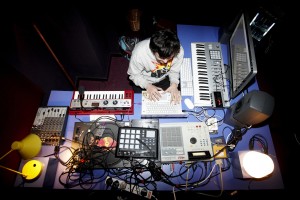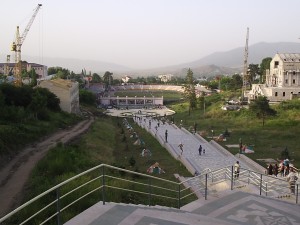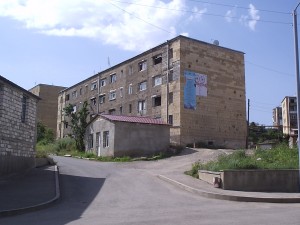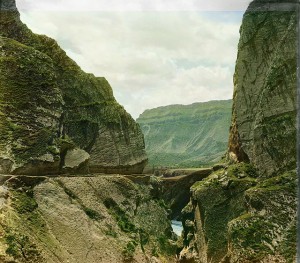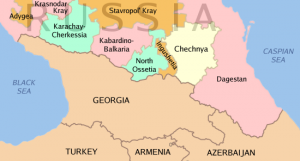Boris Ryzhy – The unwilling survivor
Category: by sophie engström, movies, poetry, russia
Tags: ailona van der horst, boris ryzhy, poetry, post-perestroika, russia, yekaterinburg
How do you describe a suicide, what it implies in loses and sorrow for people close to you? How do you describe the devastating emptiness and hopelessness that the survivors need to live with? I would say that in many aspects it is not possible, but if you have an interest in understanding, without exploiting, there are a possibility that you will be able to describe both the cruelty in being left behind, and how survivors find their way out from the labyrinth of sorrow.
In the documentary Boris Ryzhy, about the poet with the same name, made by the dutch filmmaker Aliona van der Horst, you can actually feel the sorrow in your own breath while watching it. van der Horst has managed to find the special situations, when words has no use and life itself seems to be more grim than ever.
In the introduction we see a woman wondering around in a suburn district. She is trying to get a hold on somebody that knew Boris Ryzhy. After being reprimanded by a babushka, she finally finds somebody that wants to help her and let her enter a staircase in one of the houses. The woman explains that she and her brother lived in this house when they were small. She starts to ring the door bell to the first flat in the house. She does not present herself to the lady that opens the door, but tells her about the film that Ailona van der Horst is making. She says it is a film about her brother, the poet Boris Ryzhy. She asks the old lady if she remember him, and the old lady does not remember him. The woman, the sister of Ryzhy, starts to recite a poem that Boris Ryzhy wrote, but her voice cracks, and finally she starts to cry. The woman that opened the door starts immediately to ask her about why she is crying: “Is he dead? What happened to your brother?” she asks. “He is dead. He committed suicide”, answers the sister. I believe most spectators literary can feels the pain in her voice.
The trailer for the documentary by Boris Ryzhy by Aliona van der Horst.
The documentary then continues with, as it seems, an endless desire to try to understand why Boris Ryzhy decided to end his own life. Was it because many of his friends died already? Was it because he and all his friends lived in a violent world, with gangsters that lacked empathy for suffering? Did he feel alienated or was he just a mad genius that took suicide as a desperate wish to be accepted as a poet? Aliona van der Horst investigate and gets self-disclosure and fearless help from Boris Ryzhy’s family – the wife, son, sister and mother. But even so, she never comes close to explain why, except that it is necessary to accept the unacceptable. The death of somebody you love. This is however not a failure by van der Horst, but actually a strength to a story, that could have became extremely pathetic if it was made in a less intelligent way. To tell the truth, this is actually one of the best documentaries I have ever seen, and I have seen quite a few.

Boris Ryzhy, born in 1974, grow up in Yekaterinburg. His family was well-educated family and his father was a geologist, unknown what his mother did, though. When he was rather small his family moved to a rough area in Yekaterinburg. There Boris had to learn how to survive in the tough environment. He started to boxing in the same age as writing poems (14 years old) and violence and poetry seems to be utterly connected for him. Boris Ryzhy’s poems often depict and describe the neighbourhood that he and his sister grow up in. It seems like he never left the area in his soul. One of his very old friends, that Aliona van der Horst managed to track down, describes Boris as rootless and very lonely man, even though so many loved him.
Boris Ryzhy committed suicide by hanging in May 2001, 26 years old. It is impossible to tell how his talent would develop, because his poems mostly describe the Jelstin years during 1990s. How crime and gangesters are more usual than ordinary jobs and loving and caring situations. Even so, Boris Ryzhy was not a gangster all though, but was also a PhD in Geophysics.
The poem “Show me, Gypsy woman” read by Boris Ryzhy.
In the documentary it is perhaps Boris Ryzhy’s wife that says the most devastating words. She tells about her and Boris childhood, how they were encouraged to believe in the communist future, and they thought they lived in the perfect socialist society. But when they finish school in 1991, the Soviet Empire fell apart. It didn’t come as any surprise for them, but after the fall of the empire, the “first generation of perestroika” was abandoned by the society itself. The only way that far too many saw, was the road of criminality. “We are the generation of body guards”, she says when she stands at Boris grave at the cemetery, and around her we see hundreds of graves for young men born in the beginning of 70s that dead in the mid 90s.
It is obvious that Boris Ryzhy felt as a survivor, and to survive in this “war”, like one of his friends remarks in the documentary, is “a shameful business”. We can only hope that Boris Ryzhy’s legacy will survive, because his poems is not only violent but alos beautiful. And they are a legacy from a time that we all must try to prevent to return.
If you want to read Boris Ryzhy in English you can find some here.



